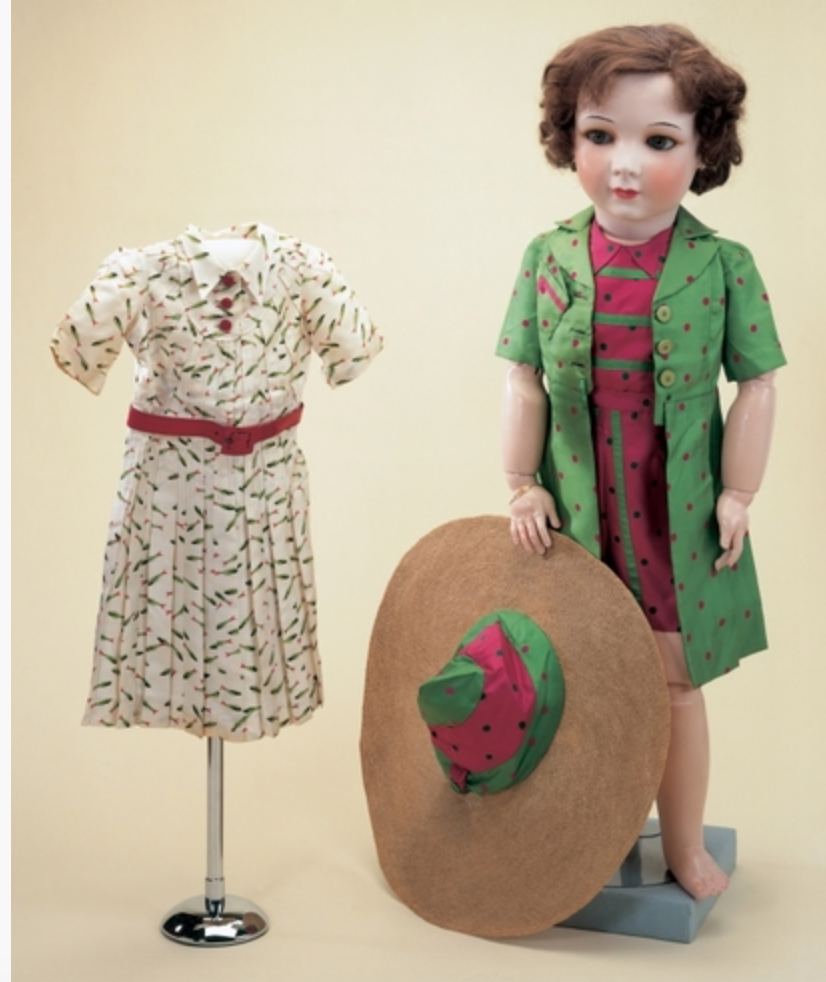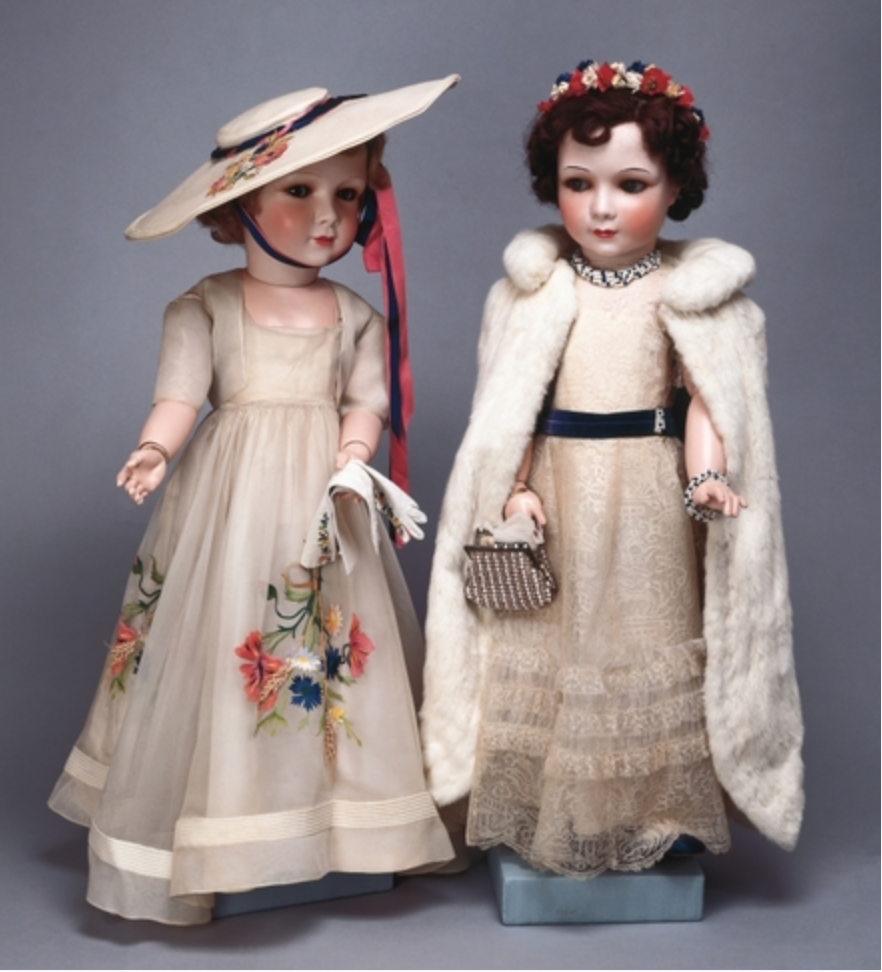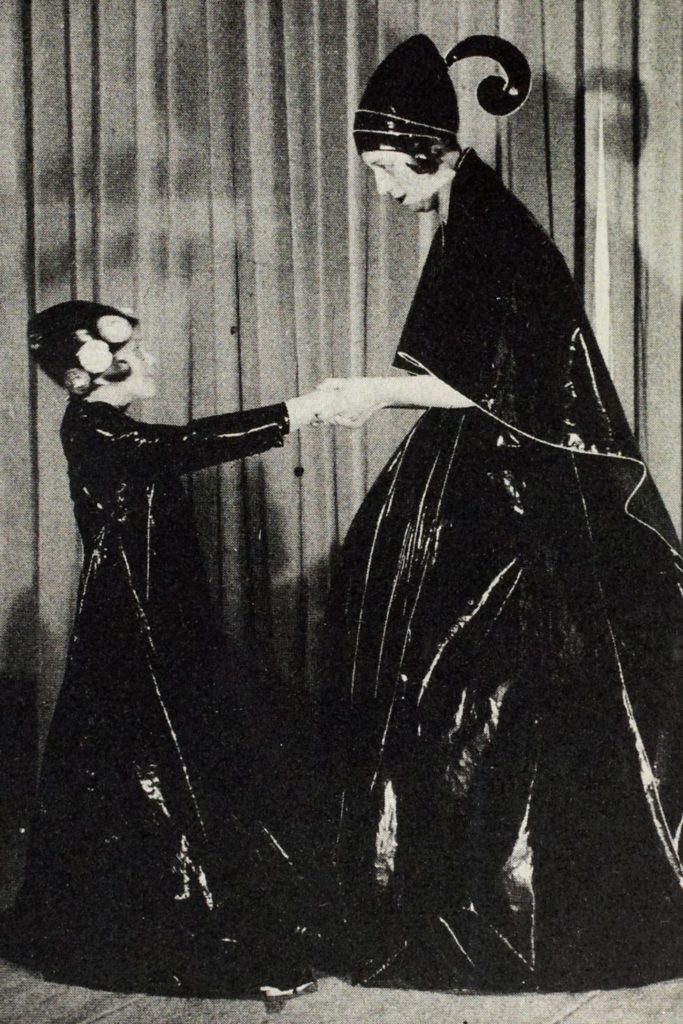Jeanne Lanvin 1938 “garden party” gowns for Princess Elizabeth and Margaret’s dolls, Marianne and France
These bisque dolls are undoubtably some of the most famous and well dressed in the world. They came with a closet filled with 360 pieces of haute couture that anyone would drool over. Named Marianne and France, these dolls were gifted to Princess Elizabeth and Princess Margaret from the Children of France during a State Visit to France in 1938. Their names were chosen from the most popular suggestions by young readers of Le Journal, who were invited to write in their favorites. Marianne and France came with 180 items each, which included dresses and accessories from the most famous fashion houses in France to represent their finest Haute couture. These included jewelry by Cartier, cases by Louis Vuitton and handbags by Hermès to name a few.

Royal Collection Trust notes that “Every occasion, time of day and season was accounted for, including Ascot gowns, yachting outfits, fur coats, silk negligees and mackintoshes, all with matching shoes, hats, and gloves.” Marianne and France seem to have been displayed more than played with however. They were first put on exhibition in 1938 at St. James’s Palace and then traveled to Scotland in 1939 where they were displayed to raise funds for King George V’s Jubilee Trust. Royal Collection Trust states that “During Queen Elizabeth’s royal tour of North America that year, further plans were made to send the dolls to Canada on an exhibition tour in aid of the National Committee en Refugees (CNCR). This tour was a resounding success, inspiring designers, raising funds and creating precedence for future fundraising tours across America of other dolls belonging to the Princesses. They returned to England in 1946, undamaged and internationally renowned.”
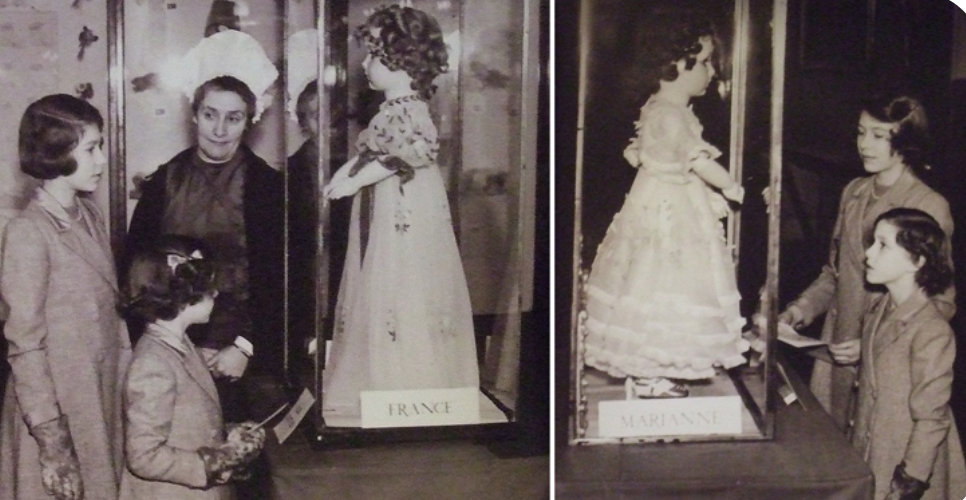
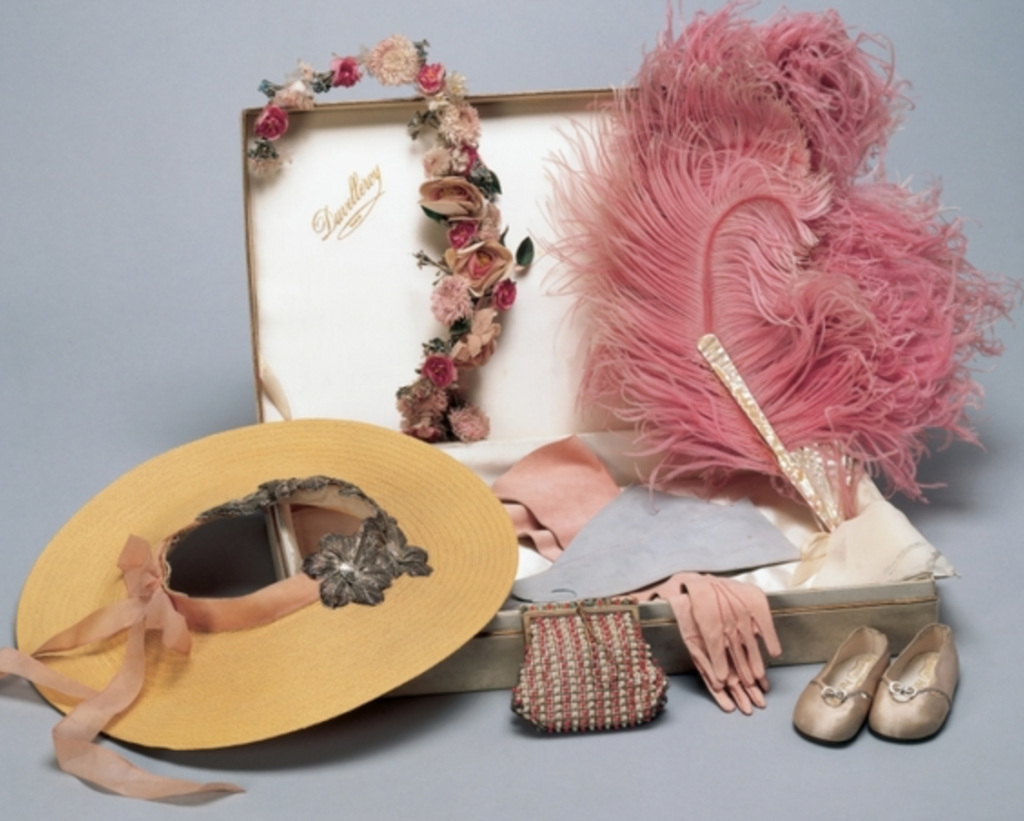
Marianne and France were commissioned by the Société Française de Fabrication de Bébés et Jouets and featured heads crafted by legendary French doll-makers Jumeau. French coiffer Valentin styled their human-hair, and their movable eyes were made by Peigne, who was well know for crafting artificial human eyes. Each doll is just over three feet tall and has plastic jointed limbs and pierced ears.

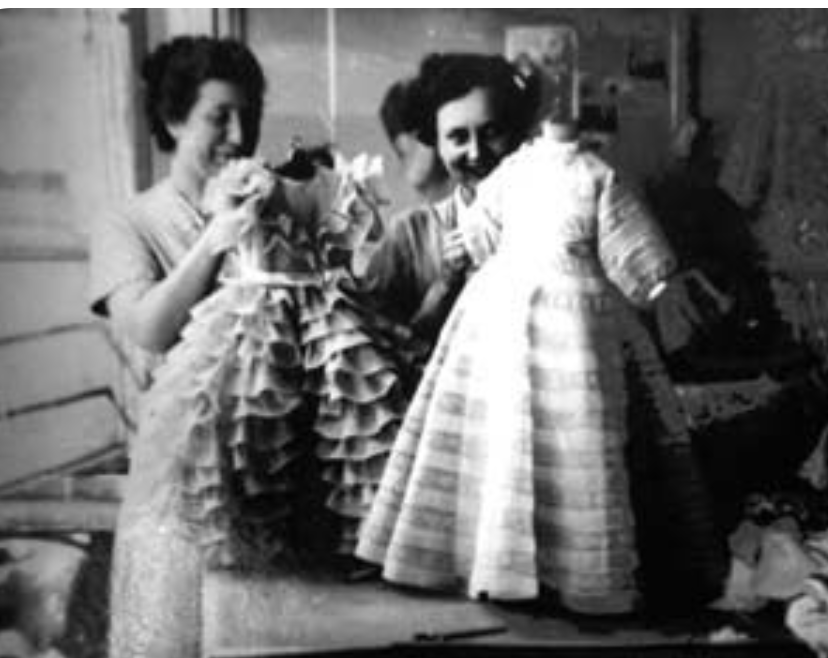
These two garden party gowns were created by the legendary Jeanne Lanvin and came with the dolls. Lanvin was known for making stunning children’s clothing, and designed dresses for the Princesses to wear many times. It was not uncommon that she would make replicas of their couture party dresses for their dolls. Lanvin first began designing elaborate children’s dresses for her daughter Marguerite who was born in 1897. Marguerite quickly became Jeanne’s muse and pushed her beyond the boundaries of millinery, which she had been devoted to prior to her daughters birth. Marguertie’s outfits were so admired that people from all over Paris began requesting that Lanvin create clothing for their children. By 1908 Lanvin had enough business to open a children’s clothing store.
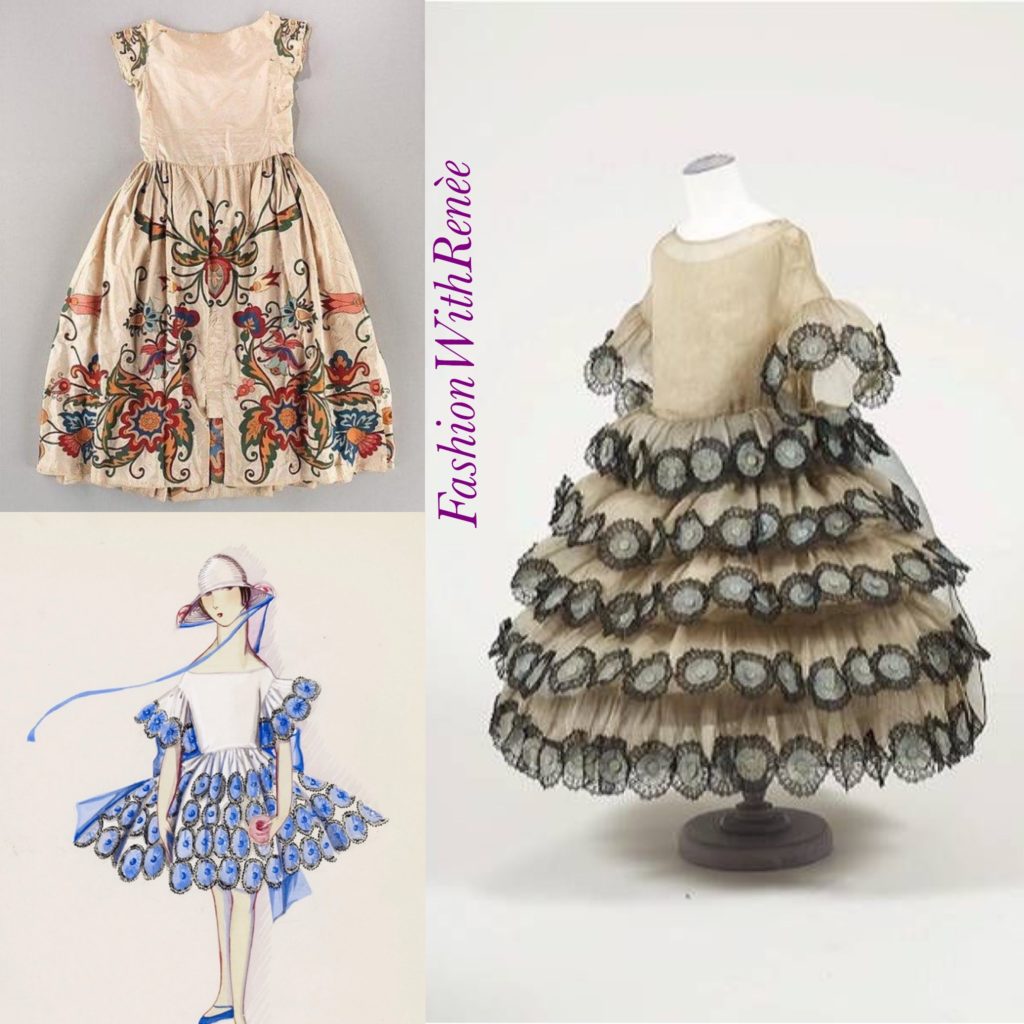
Eventually, mothers began to request matching versions of the gorgeous and ornate children’s dresses that Lanvin created, which led to a mother-daughter collection. All of Lanvin’s designs, including her women’s gowns were incredibly detailed. Each has a romantic, fairy-tale like quality that is a feast for the eyes.


Queen Elizabeth I was one of the most famous clients to request Lanvin dresses be made for her daughters in the 1930’s. Many photos from this period show the young Princesses in matching frilly dresses that have an unmistakably Lanvin aesthetic.
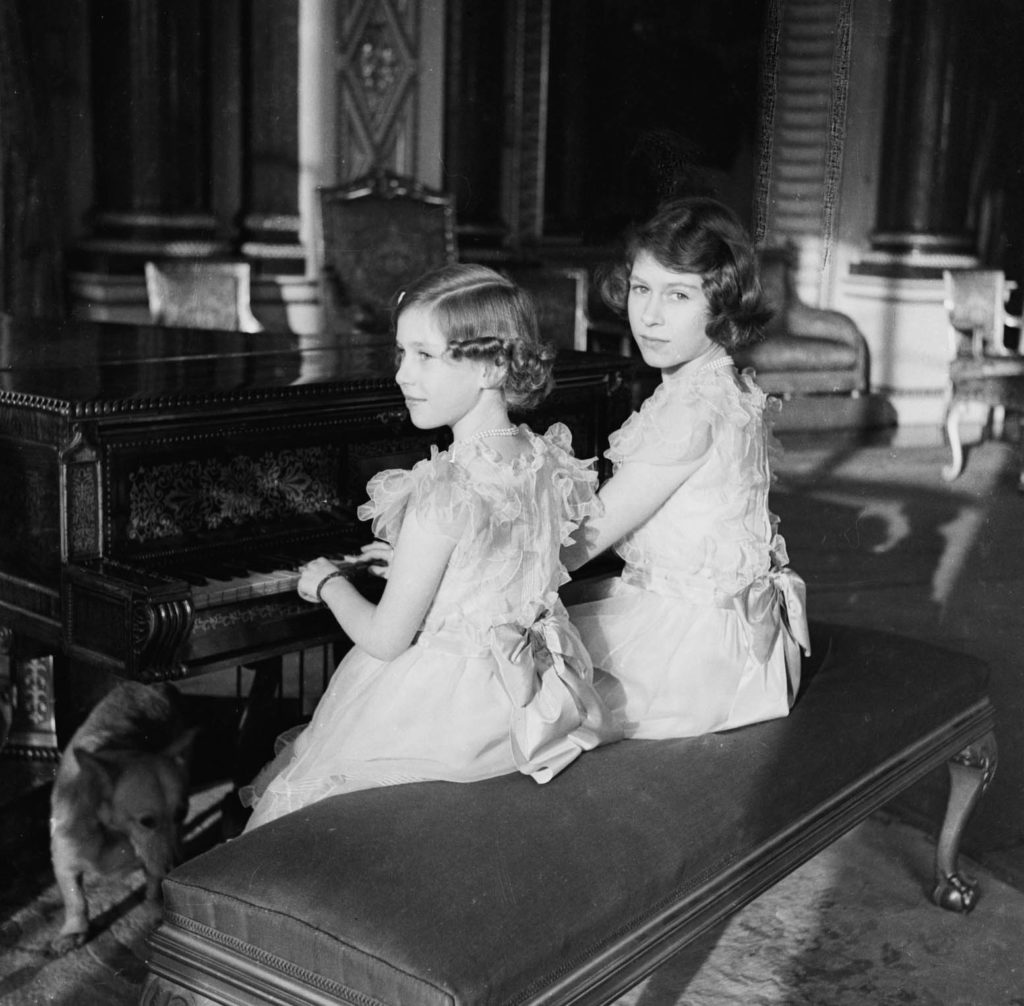

Both Marianne and France’s dresses are made from silk and lamé. The hyacinth blue silk-organza gown has a lace embroidered flower corsage and a matching hat with a flower and bow. There is a silver lamé belt and a grey silk underdress with tulle lining. The pale rose gown features endless silk-organza ruffles and is accessorized with a silver lamé belt and wicker sun hat with a floral band. The shape of these gowns reflect Lanvin’s signature, Robe de Style.

The Lanvin logo, which was inspired by a photo of Jeanne and Marguerite in matching outfits remains today, as a reflection of how the brand began.
Marianne and France reside in the Royal Collection Trust today and are sometimes displayed at exhibitions alongside their endless iconic fashion, both at Windsor Castle and Buckingham Palace.
Sources:
https://www.rct.uk/collection/themes/trails/france-and-marianne-dolls-for-the-little-princesses


